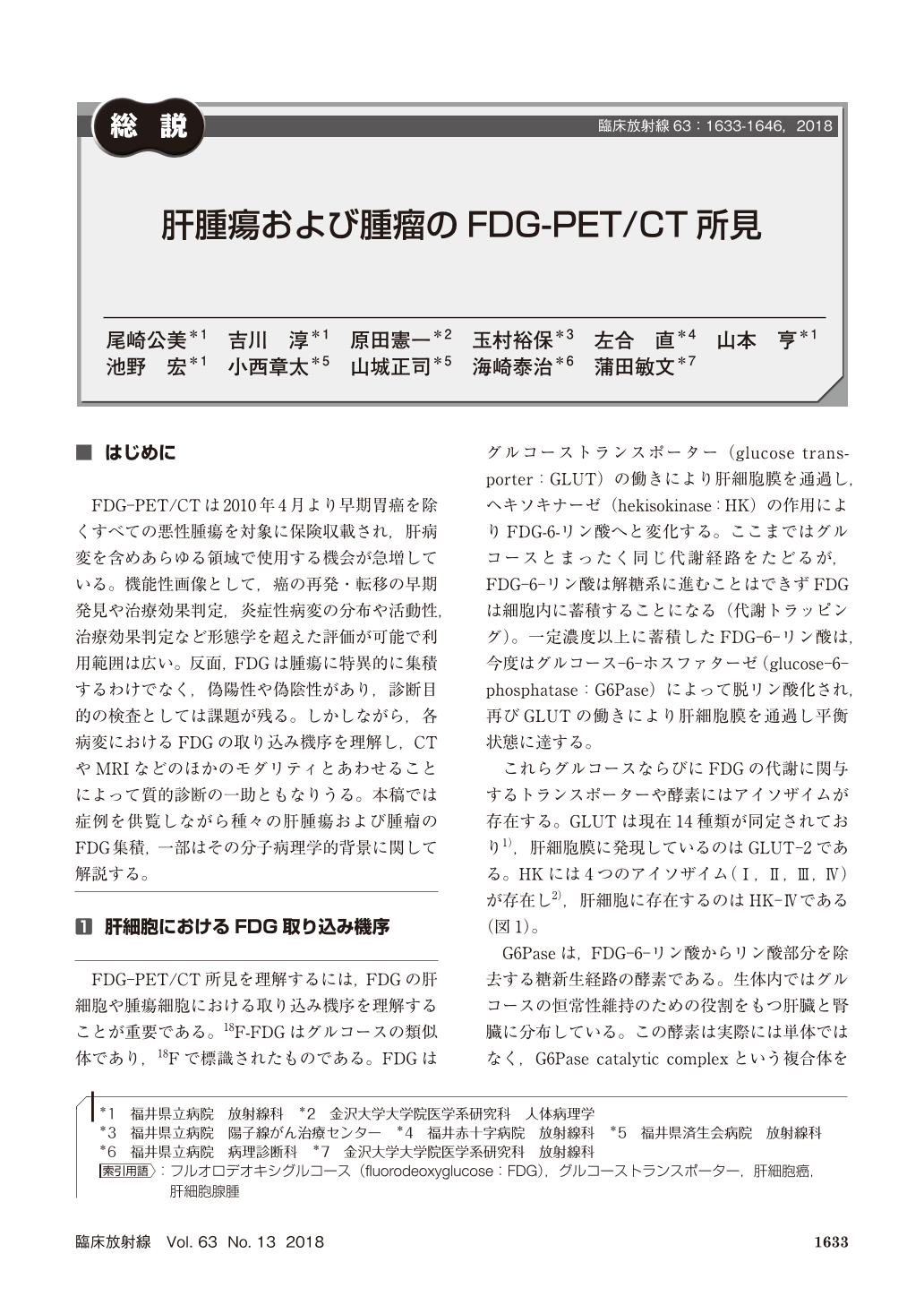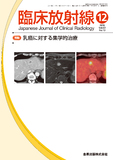Japanese
English
- 有料閲覧
- Abstract 文献概要
- 1ページ目 Look Inside
- 参考文献 Reference
FDG-PET/CTは2010年4月より早期胃癌を除くすべての悪性腫瘍を対象に保険収載され,肝病変を含めあらゆる領域で使用する機会が急増している。機能性画像として,癌の再発・転移の早期発見や治療効果判定,炎症性病変の分布や活動性,治療効果判定など形態学を超えた評価が可能で利用範囲は広い。反面,FDGは腫瘍に特異的に集積するわけでなく,偽陽性や偽陰性があり,診断目的の検査としては課題が残る。しかしながら,各病変におけるFDGの取り込み機序を理解し,CTやMRIなどのほかのモダリティとあわせることによって質的診断の一助ともなりうる。本稿では症例を供覧しながら種々の肝腫瘍および腫瘤のFDG集積,一部はその分子病理学的背景に関して解説する。
Fluorine-18 fludeoxyglucose(FDG)-PET/CT is a clinical molecular imaging modality that elucidates cellular glucose metabolism. Many studies have described the usefulness of FDG-PET/CT for the detection of several types of primary tumours and metastases and spread of inflammation, however there are limitations to the diagnosis of hepatic lesion. This article presents the FDG-PET/CT imaging findings of malignant and benign hepatic tumor and tumor-like lesions, the molecular mechanism underlying increased FDG uptake by immunohistochemical study, and the usefulness and limitation of FDG-PET/CT in diagnosis of hepatic lesions.

Copyright © 2018, KANEHARA SHUPPAN Co.LTD. All rights reserved.


